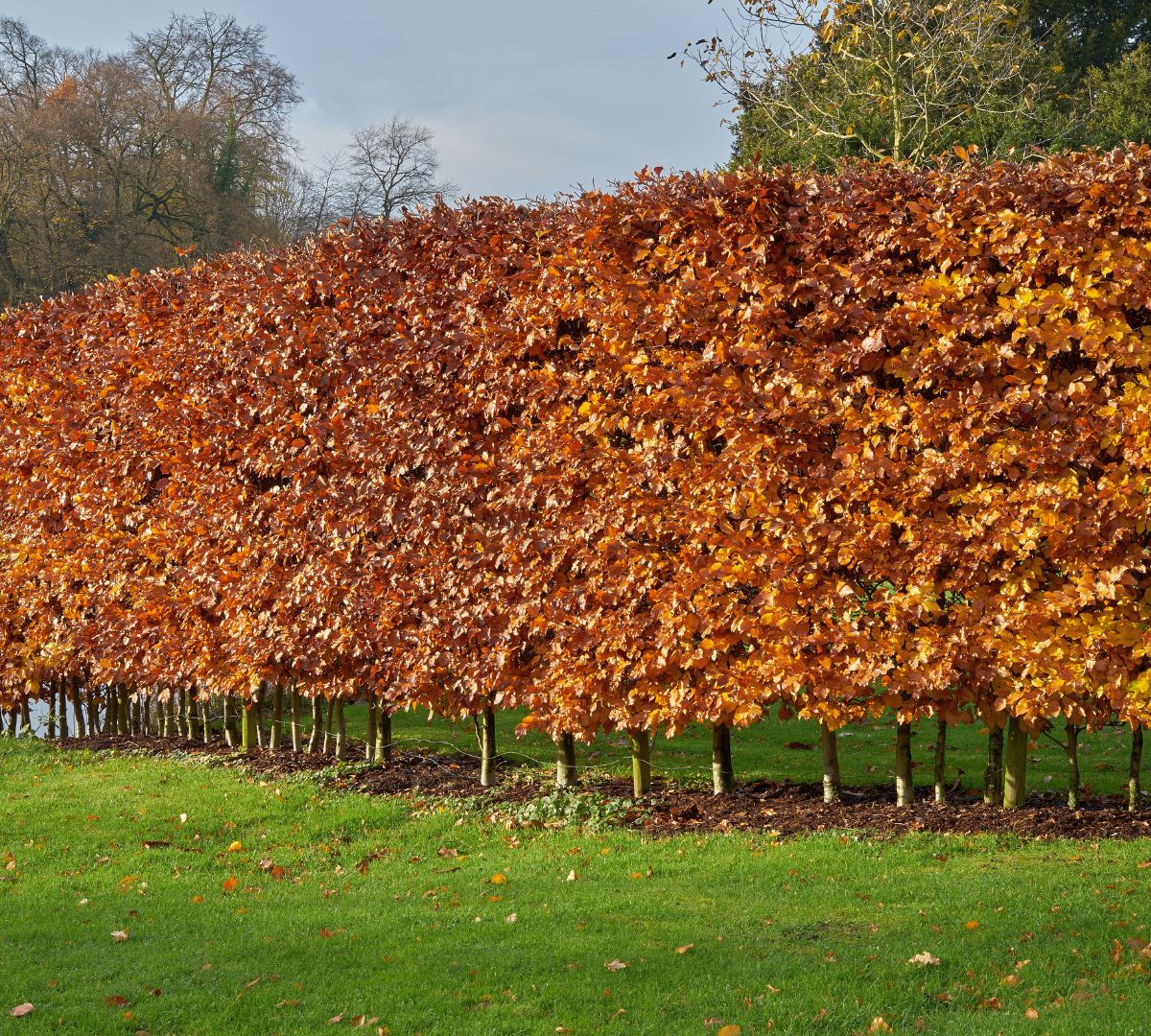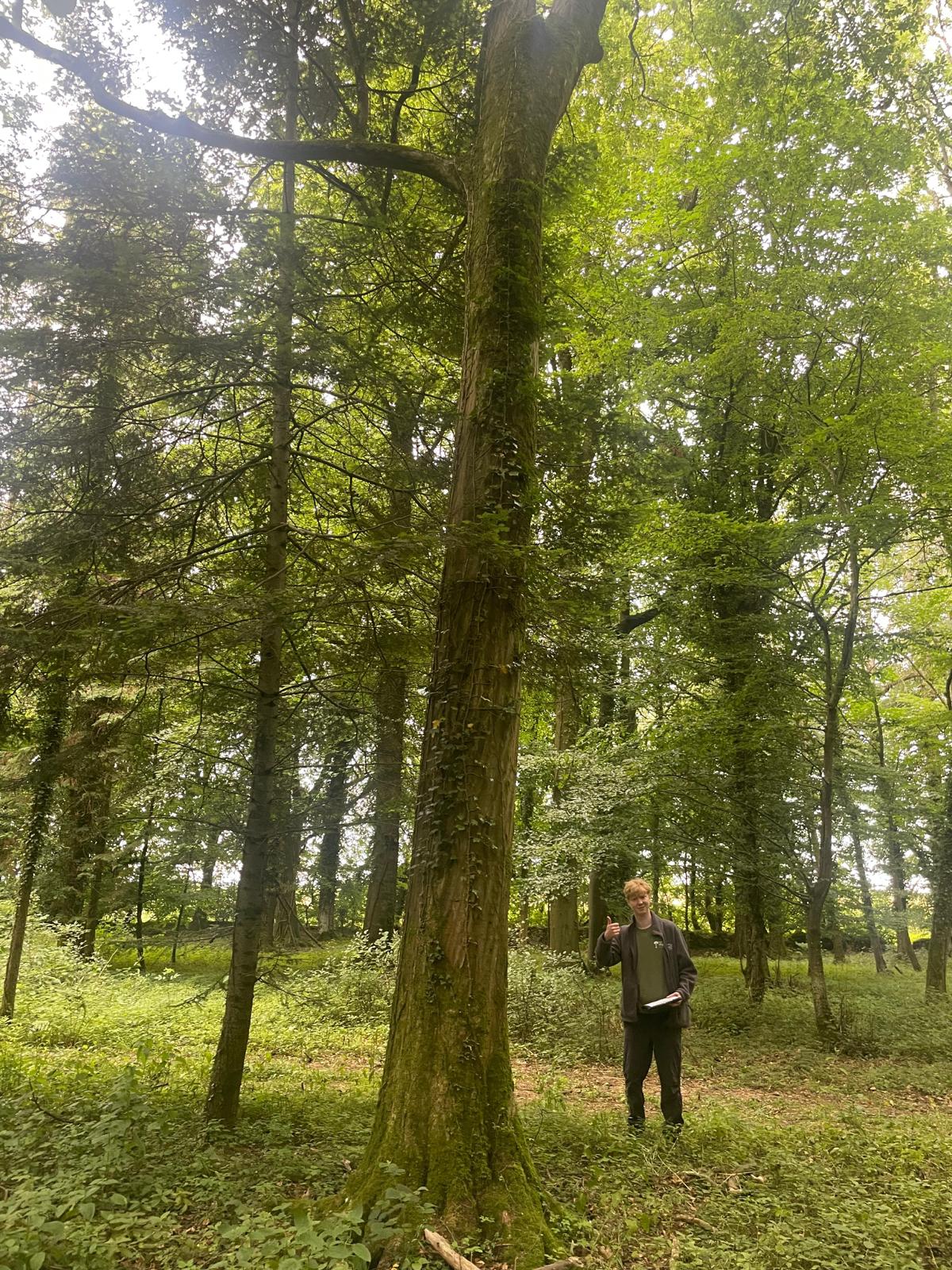Hornbeam (Carpinus betulus) is a native minor broadleaved species that produces very hard timber and is mainly found in the south of England. Hornbeam faces threats from grey squirrel bark stripping and the disease Phytophthora.
About Hornbeam
Hornbeam trees are deciduous, and are characterized by their smooth, grey bark and are often mistaken for beech trees due to their similar appearance. They typically reach heights of 15 to 25 metres, with a trunk diameter of 1 metre or more. Their branches extend horizontally, forming a broad crown, while the leaves are elliptical in shape, featuring prominent veins and serrated edges. This distinct foliage turns from a vibrant green shade in the spring and summer to a pale yellow in autumn, illuminating the UK landscapes with autumnal hues.
Hornbeam thrives in a variety of conditions particularly in lowland woodlands, parklands, and hedgerows in the south-east of the country. Hornbeam trees are well-suited for fertile, moisture-retaining soils, but they can also tolerate relatively dry and sandy environments. Their ability to grow in shade makes them a valuable species within woodland ecosystems, as they provide a canopy layer that helps control light filtration and enhance biodiversity below.

Hornbeam woodlands
Why hornbeam is important
Hornbeam trees offer various benefits to their surrounding ecosystems. Their dense foliage provides nesting sites and shelter for birds, small mammals, and insects, while their seeds serve as a vital food source for numerous bird species. Hornbeam trees are also renowned for their ability to act as windbreaks and noise barriers, which is particularly valuable in urban and industrial settings.

Hornbeam hedge in Autumn
Beyond their ecological importance, hornbeam trees hold cultural significance in the UK. They have been used historically for timber and have a strong association with traditional crafts and woodworking. The hard, fine-grained wood is highly durable, making it suitable for furniture, tool handles, and even carvings. Through coppicing a large amount of charcoal was created to support a thriving iron industry, resulting in many hornbeam woodlands to this day still exhibiting coppice with standards systems. The tree’s name “hornbeam” derives from the Old English words “horn” and “beam,” signifying its toughness and resilience.
Our work with hornbeam
Future Trees Trust is focusing on improving seed supply for hornbeam through the Forestry Commission’s Seed Sourcing Grant (SSG). Ollie Stock, Forestry Technician at FTT, is leading on the project identifying ‘Plus Trees’: hornbeams which exhibit characteristics such as straight, circular stem (minimal fluting), strong apical dominance and light horizontal branching. These criteria can be applied more loosely for hornbeam due to its relative rarity and historic management practices. Maiden hornbeam trees would be preferred. For more information, visit our SSG page.

Ollie Stock assessing Hornbeam stand
